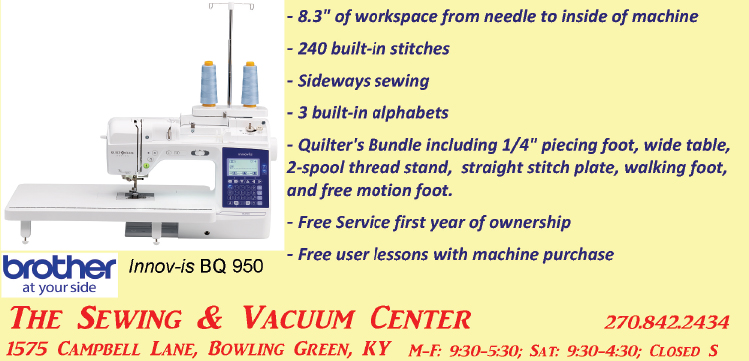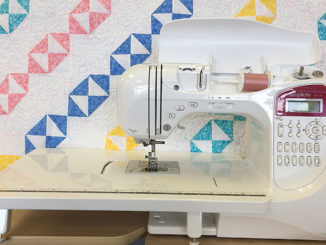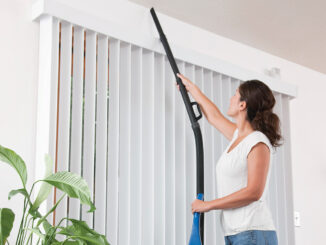
Today’s sewing machines have many types of feet and accessories available to make stitching easier. Most machines will have the same basic 3-5 presser feet included with the machine. More expensive machine models generally include more presser feet. Many of the feet can be used for more than one function, while some can only perform one. Get out your machine accessory box and see what types of feet your machine has and what you can do with them.
Customers often come into our store asking for presser feet for their machines. It’s important to know the type of shank the foot fits on. Feet for these types of shanks are not interchangeable, so this can help in selecting the correct foot. There are three types of sewing machine shanks: low, high, and slant.
Most newer machines will have either the high or low shank. The slant shank was used on older (1990 or earlier) Singer machines.
Feet can also snap on/off the shank or the foot may already be attached to a shank. (You would remove your original presser foot shank to put this type of foot on.)
Feet that should come with any new machine include:
•All-purpose presser foot: The machine will be equipped with this as it “comes out of the box.” This is the foot that is used for most sewing projects. The foot can be plastic or metal. It will have two “toes” and a wide opening that will accommodate needle movements for zig-zag and other decorative stitches.
•Blind hem foot: Creates an almost invisible hem on garments and draperies. The foot will have a guide, either plastic or metal, that helps in creating the stitch. This foot is included with most machines as a standard accessory.
•Buttonhole foot: Another standard foot included with machines. This foot will vary in appearance and function according to the type of buttonhole(s) the machine will make. Some of the feet will measure the button while the machine “reads” the foot and makes the buttonhole the specific length of the button. With other feet, you will be the one determining the buttonhole length while the foot provides the guide for aligning stitches.
•Zipper foot: Use putting in a standard zipper. This foot will have one “toe” which allows stitching close to the zipper teeth. The stitching for this zipper will show on the outside of the garment or project.
More expensive machines will include a number of the following feet with the machine purchase. For less expensive machines, these feet will be an additional purchase.
•Overedge or overlocking feet are designed to work with the stretch stitches on the machine to either seam or finish edges of fabrics, especially knits. The foot has a guide and a small wire that the stitches will cross to keep the knit fabric from rolling up as you sew.
•Darning feet are used with the feed dogs lowered with you controlling the movement of the fabric under the foot. The darning foot can be used for freehand embroidery, thread painting, darning, and free motion quilting. This foot is a separate shank so the original machine shank and foot will need to be removed for use. The foot can be either plastic or metal.
•Open toe feet are completely open to the needle. The foot has only the “toes” with no bar connecting them in front of the needle. This foot is wonderful to use when you need to see needle position, especially with decorative stitching or appliqué. Most will have a groove on the underside of the foot that allows decorative or thick stitches to move smoothly under the foot. The foot can be a snap-on and either plastic or metal.
•Teflon feet are generally plastic with a coating of Teflon on the bottom of the foot. These are great to use with decorative stitches and leather, vinyl, and ultrasuede fabrics. The Teflon keeps the foot moving smoothly on fabric that might otherwise snag with regular presser feet.
These are just a few of the feet that are made for today’s sewing machines. Remember that your machine purchase at The Sewing & Vacuum Center includes one-on-one free owner lessons on machine use including what to do with all the feet your new machine has!
-submitted by The Sewing & Vacuum Center





